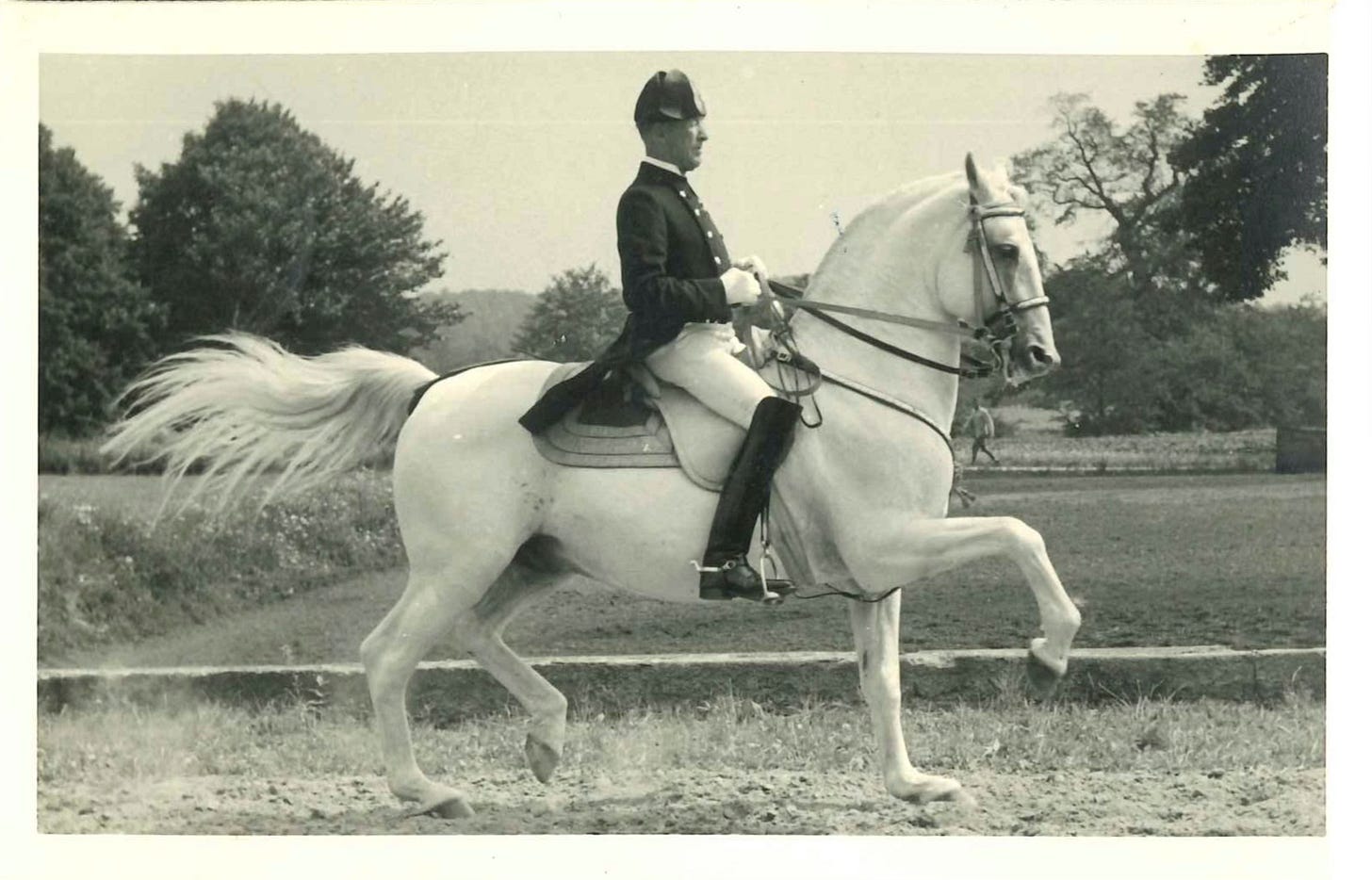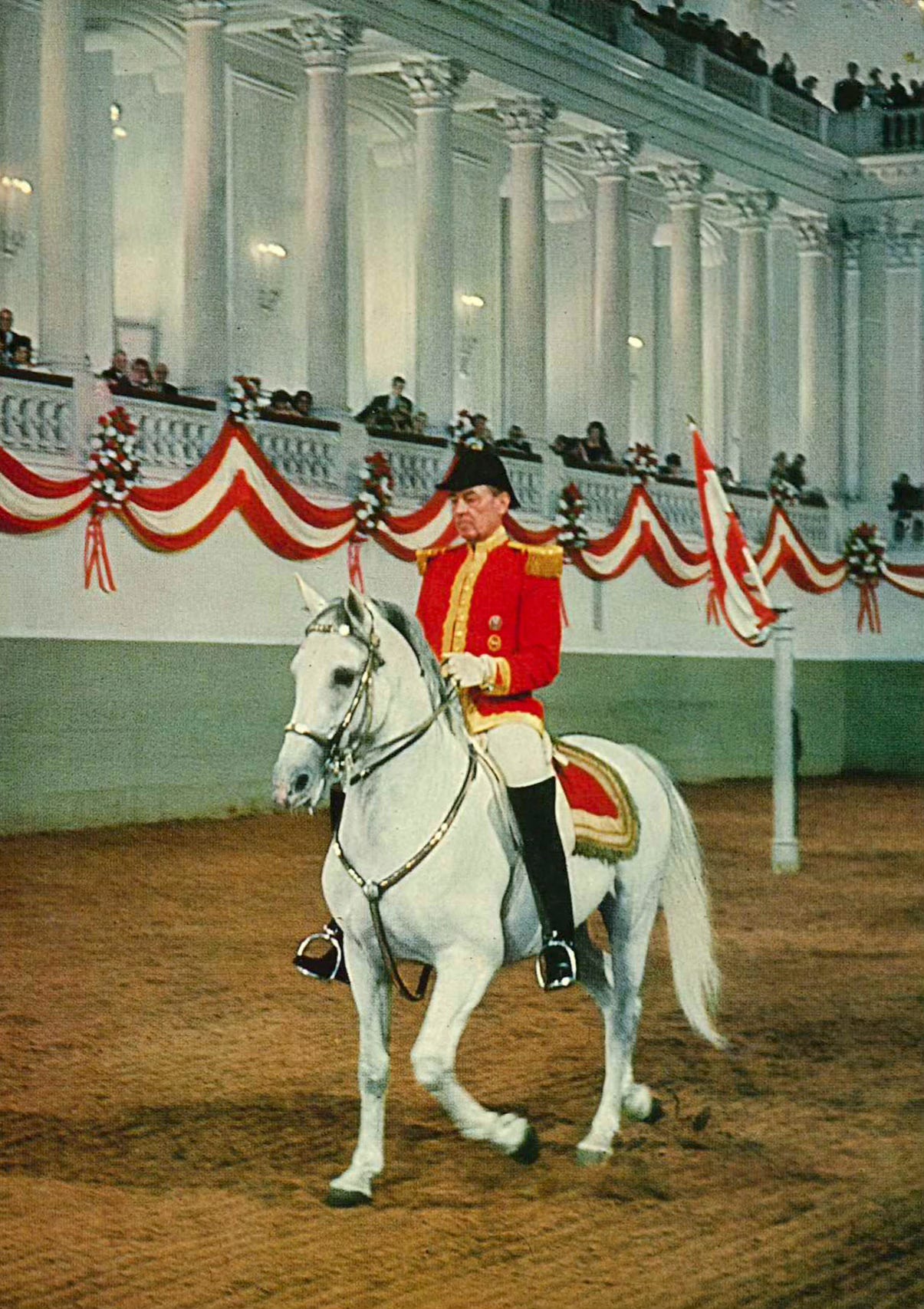Vienna's Famous White Horses
A visit to Vienna's world-famous Spanish Riding School, the oldest such institution on this planet
One more posting about Vienna (for the time being), and this one is quite special: some of you, dear readers, may know about the famous white Lippizaner horses and Vienna’s Spanish Riding School, or Spanische Hofreitschule. I’ll let Wikipedia do the ‘splainin’ here for a moment:
The Spanish Riding School (German: Spanische Hofreitschule) is an Austrian institution based in Vienna, dedicated to the preservation of classical dressage and the training of Lipizzaner horses, whose performances in the Hofburg are also a tourist attraction. The leading horses and riders of the school also periodically tour and perform worldwide. It is one of the “Big Four”, the most prestigious classical riding academies in the world, alongside the Cadre Noir, the Portuguese School of Equestrian Art, and the Royal Andalusian School.
If you ever stroll casually across Vienna’s Josephsplatz—known to film critics as a prime location of Carol Reed’s 1949 classic “The Third Man” (although the square isn’t shown), it might well be that you’d encounter a white stallion being brought across the street:
The Spanish Riding School is located between Michaelerplatz and Josefsplatz inside the Hofburg in central Vienna. Performances take place in the Winter Riding School, built between 1729 and 1735. The hall of the Winter Riding School is mainly white with some beige and light grey. A portrait of Emperor Charles VI is located above the royal box and opposite the entrance (to which the riders always salute before they ride). The hall measures 55 by 18 metres (180 by 59 ft) and is 17 metres (56 ft) in height.
The Spanish Riding School also has summer stables in Heldenberg-Wetzdorf, Lower Austria. The 68 resident stallions are taken there in July and August for seven weeks, where they are kept in stalls with paddocks. The horses are not schooled during this period, but instead are hacked in the nearby forest.
Our kids went to visit the summer stables Heldenberg-Wetzdorf last year during their vacation, and they’ll return to attend the one performance the Lippizaner are doing in late June (which also means you can probably imagine how much they’re looking forward to this). So, with all that arranged, I had a look for postcards—and here we go.
Mailed in the 1950s, the above postcard shows the traditional garb worn by the elite riders of these magnificent animals:
All riders wear the traditional uniform: brown tailcoats, bicorne-style hats, white buckskin breeches, white suede gloves, and black top riding boots. Swan neck spurs are also part of the uniform. The empire style uniform (1795–1820 in fashion) has remained relatively unchanged for 200 years.
These clothes are also clearly visible from the other side, as shown in the below (unmailed) postcard:
During performances, the fully trained stallions wear a traditional gold-plated breastplate and crupper, called a Goldzeug. They also carry a “school saddle”, which is made from buckskin and larger than the more commonly seen English saddle used by the school when training the stallions and riders. Gold-plated double bridles are only used for performances. All horses, except the young stallions, wear red and gold or green and gold shabracks, or saddlecloths, under the saddle. Red is for “All Steps and Movements of the High School”, “Pas de Deux”, “On the Long Rein”, “The Grand Solo” and “The School quadrille”. Green is used for “Work In-Hand” and the “Airs above the Ground”. The shabrack is also used to differentiate the status of each rider: the director of the school has three gold bands and gold fringe, the chief riders have three bands and no fringe, riders have two bands, and assistant riders have one.
Here’s the “School Quadrille” on a postcard mailed in 1965:
Needless to say, I do have colourful postcards of these, too:
Among the more spectacular movements is what is called “Courbette”, or “Airs above the ground”, as seen in the below postcard:
I do have some more of these, but I’m unsure if you’d like to see them—it’s basically a bit “more of the same”, but then again, if you like horses, I’ll post them, too!









More horses, please! 🙏
I got to go, with my parents, to see the Lippizaner horses perform at the State Fair Grounds one year, when I was a child. They are amazing and amazingly beautiful.
Brilliant, thanks so much for posting.
We went last year when visiting along with the Christmas markets, the show was spectacular and very rewarding.